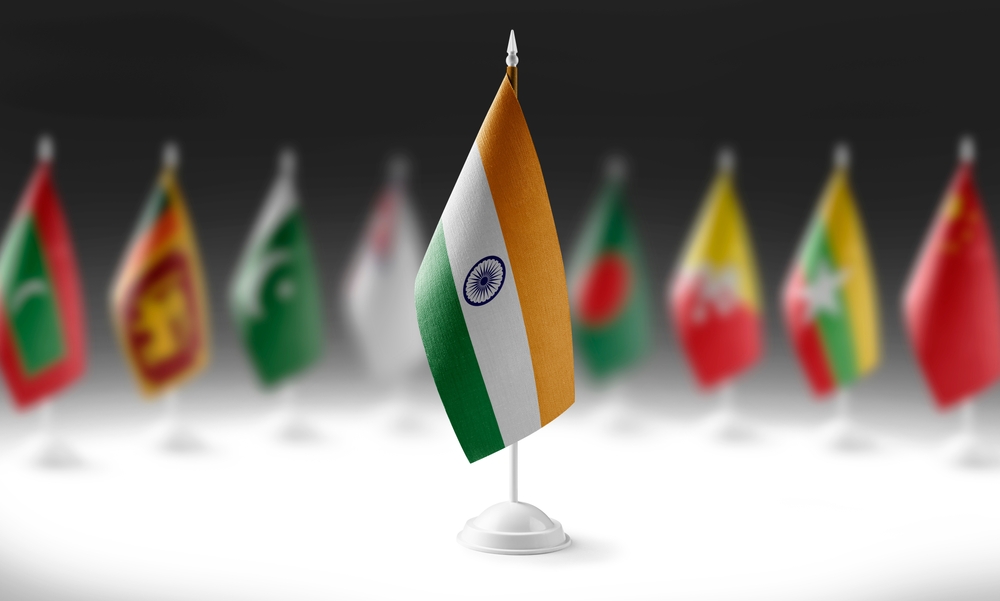As India’s trade landscape evolves, the government finds itself at a crossroads, particularly concerning its approach to Free Trade Agreements (FTAs). Amid increasing trade imbalances with countries like the United Arab Emirates (UAE) and members of the Association of Southeast Asian Nations (ASEAN), the Indian government has decided to pause negotiations on new trade agreements with smaller nations such as Oman and Peru. This shift reflects a growing concern about the impact of existing trade deals and the need to adopt a more cautious and strategic approach to international trade.
The Growing Trade Gap: A Cause for Concern
Recent trade data indicates a troubling trend for India, with imports outpacing exports significantly. For instance, imports from the UAE surged by a staggering 49.22% in September 2024 compared to the previous year, while exports to the same region only rose by 23.75%. This discrepancy in trade figures underscores a broader pattern observed over the past few months, wherein imports have consistently outstripped export growth.
The statistics for the April-September period of 2024 reveal that imports from the UAE soared by 52% to $31.45 billion, while exports increased by a mere 11.45% to $17.23 billion. Consequently, the trade gap widened dramatically, increasing by 171% compared to the previous year. This situation raises alarms not only about the trade deficit but also about the sustainability of India’s economic growth and its potential vulnerability to external shocks.
Reassessing Existing Trade Agreements
India’s trade negotiations and agreements, particularly those with the UAE and ASEAN, have come under scrutiny due to their less favorable outcomes for the Indian economy. The FTA with the UAE, which came into effect in February 2022, and the long-standing agreement with ASEAN, signed in 2010, have both resulted in a substantial increase in imports relative to exports. As a result, the Ministry of Commerce and Industry has initiated a review of these agreements to understand the underlying issues and seek remedies.
For instance, the ASEAN trade deal has faced criticism for failing to deliver the anticipated benefits, with the trade deficit with the region escalating by 70% in FY23 compared to the previous fiscal year. This situation highlights a tariff asymmetry within the ASEAN agreement, prompting calls for a comprehensive review to rectify the imbalances.
A Strategic Pause in Negotiations
In light of these challenges, the Indian government has opted to pause negotiations for new trade agreements, particularly with smaller countries such as Oman and Peru. This decision is not merely a reaction to the widening trade gap but also a strategic move to recalibrate India’s approach to international trade. The government aims to develop a fresh Standard Operating Procedure (SOP) that will guide future negotiations and ensure that India’s interests are adequately protected.
The new SOP is expected to address the inconsistencies and inefficiencies that have characterized past negotiations. It will serve as a template for both multilateral and bilateral trade agreements, emphasizing modern trade issues such as labor and environmental standards. Moreover, it aims to foster a clearer understanding of the trade-offs involved in negotiations and the priorities of each party.
The Role of Expert Guidance and Institutional Knowledge
One significant challenge faced by Indian negotiators is the lack of subject matter expertise and the institutional memory that comes from experience. Foreign negotiators often possess years of expertise, enabling them to navigate complex discussions effectively. In contrast, Indian officials may be rotated frequently, leading to a loss of valuable knowledge and continuity in trade negotiations.
To address these issues, the new SOP will include guidance from the Ministry of External Affairs (MEA) and other relevant departments. This collaborative effort aims to enhance the effectiveness of negotiations by incorporating insights from various sectors and stakeholders, including management consultancy firms like Boston Consulting Group.
Focus on Strategic Markets
While India has traditionally focused on smaller trade agreements, the current strategy emphasizes targeting larger markets that promise more significant benefits. The government is considering a shift towards negotiations with the European Union and the United Kingdom, where India may have better prospects for favorable terms. Additionally, countries of geopolitical significance, such as the Maldives, are being prioritized in this new approach.
The government had previously made strides toward finalizing agreements with the European Free Trade Association (EFTA) and was close to signing a deal with Oman. However, leadership changes in the UK stalled negotiations with that country. The focus now appears to be on maximizing export gains and securing more advantageous terms in negotiations with larger economies.
Navigating Competitive Trade Landscapes
Despite managing to negotiate early harvest deals with countries more accommodating to India’s negotiating style, trade agreements with competitive nations such as the UK and EU have stalled for years. India’s decision to exit the China-led Regional Comprehensive Economic Partnership (RCEP) further illustrates the complexities involved in engaging with competitive trading partners.
The pause in negotiations with smaller countries like Peru, Oman, and Chile is indicative of a broader concern regarding the benefits derived from such agreements. Officials recognize that while these deals may open up markets for partner countries, they often fail to provide equivalent returns for India, leading to an imbalanced trade situation.
Future Implications and the Path Forward
The path forward for India’s trade strategy will require a careful balancing act. As the government reassesses its approach to FTAs, it must remain vigilant about the potential consequences of rapidly increasing imports from FTA nations. The goal will be to establish agreements that are mutually beneficial and protect India’s economic interests.
The Ministry of Commerce and Industry is poised to complete the review of the ASEAN deal by next year, aiming to address the challenges posed by tariff asymmetries and the rising trade deficit. Additionally, the government must focus on building a robust institutional framework that enhances the expertise of negotiators and ensures continuity in negotiations.
India’s trade strategy is at a pivotal moment as the government seeks to recalibrate its approach to Free Trade Agreements. With a growing trade deficit and increasing imports from partner nations, the pause in negotiations reflects a prudent and strategic reassessment of India’s trade landscape. By focusing on larger markets, streamlining negotiation processes, and enhancing institutional knowledge, India aims to create a more favorable trading environment that benefits its economy in the long run. As the global trade dynamics continue to evolve, India must remain agile and responsive to the challenges and opportunities that lie ahead.




